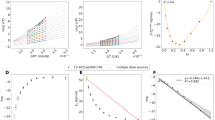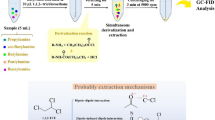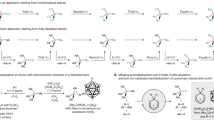Abstract
THE compound monochlorosilane, SiH3Cl, prepared in 1919 by Stock, was shown by him to yield volatile monomeric derivatives in its reactions with water and ammonia. With water it forms the compound (SiH3)2O, which is a gas, b.p.—15.2° ; and with ammonia the product is an amine-like body of the formula N(SiH3)3, b.p. + 52°. This field appeared to us to be one which was capable of great extension, and we have already made a number of interesting observations. Thus we find that monochlorosilane reacts spontaneously and quantitatively with methyl-amine according to the equation: The product, methyldisilylamine, is a liquid, b.p. + 32.3°, which is stable in air, but is quantitatively hydrolysed by alkali: its formula has been established by analysis and by vapour density determinations. It differs from aliphatic amines in being quantitatively decomposed by hydrogen chloride: Ethyldisilylamine, prepared by identical methods, is a liquid of very similar properties, boiling at + 65.9°.
This is a preview of subscription content, access via your institution
Access options
Subscribe to this journal
Receive 51 print issues and online access
$199.00 per year
only $3.90 per issue
Buy this article
- Purchase on SpringerLink
- Instant access to full article PDF
Prices may be subject to local taxes which are calculated during checkout
Similar content being viewed by others
Author information
Authors and Affiliations
Rights and permissions
About this article
Cite this article
EMELÉUS, H., MILLER, N. New Derivatives of the Silyl Radical. Nature 142, 996–997 (1938). https://doi.org/10.1038/142996b0
Issue date:
DOI: https://doi.org/10.1038/142996b0



